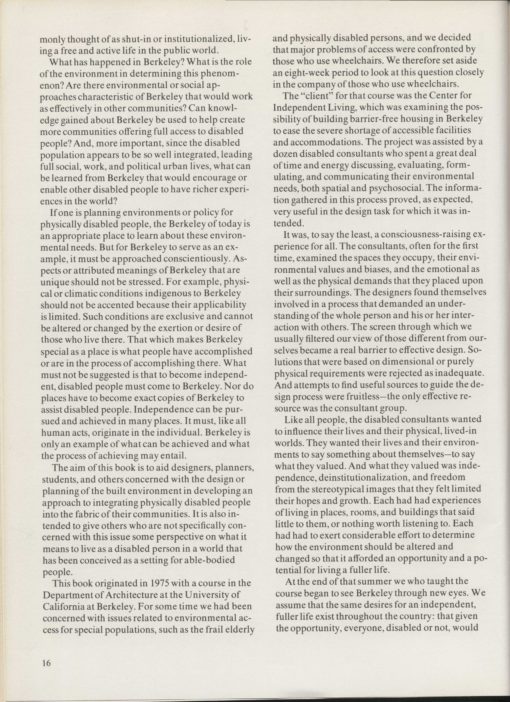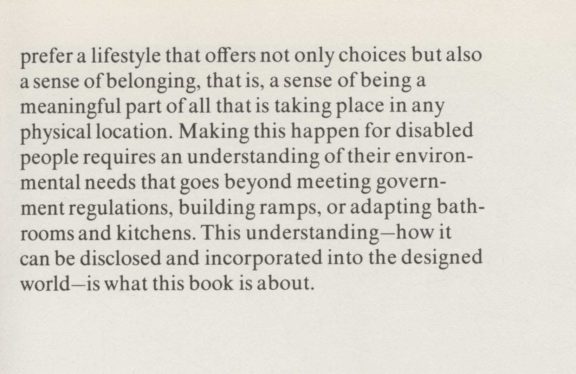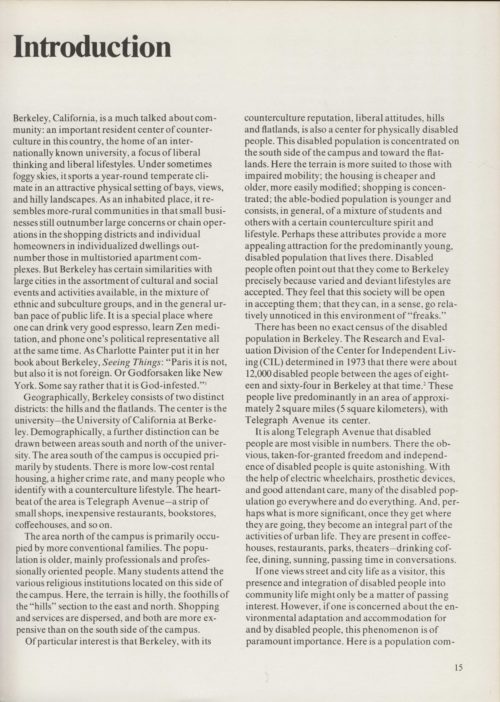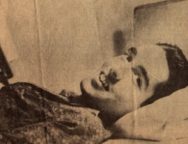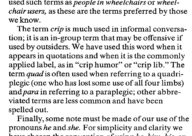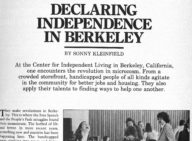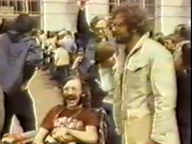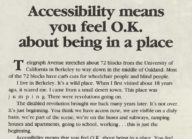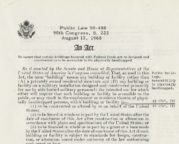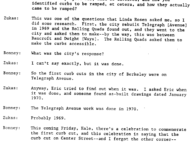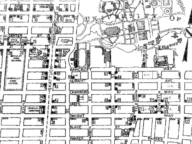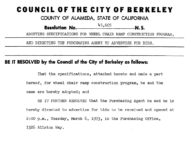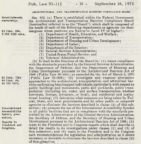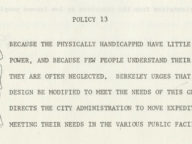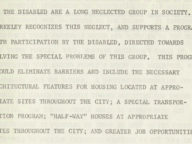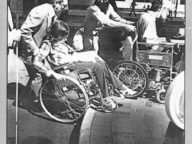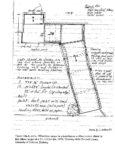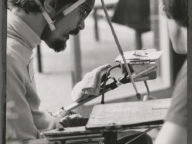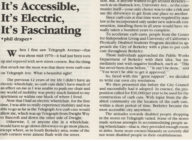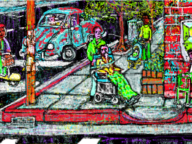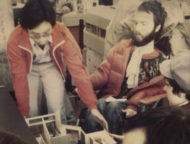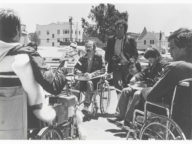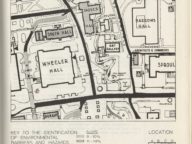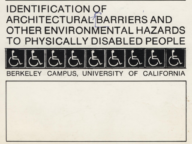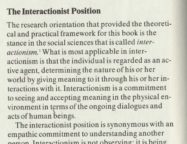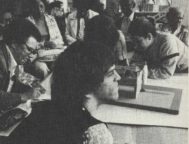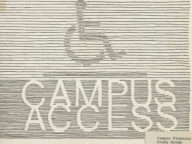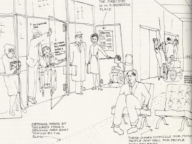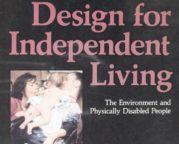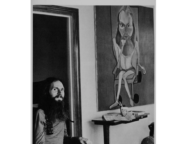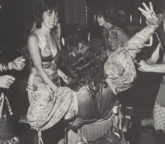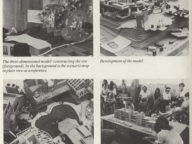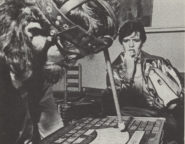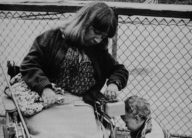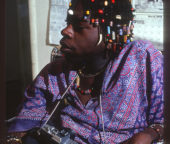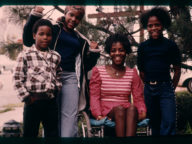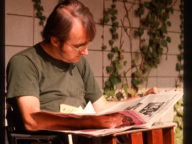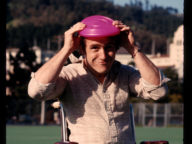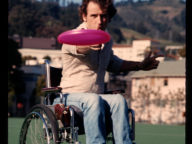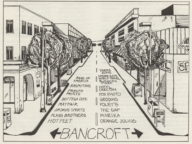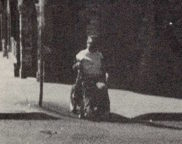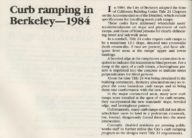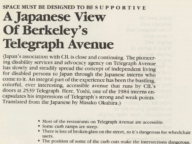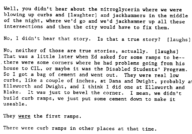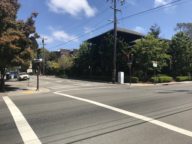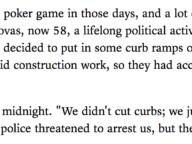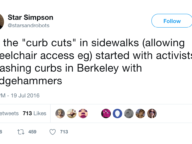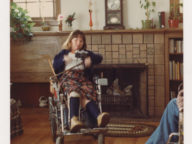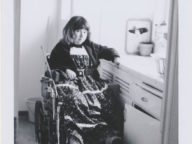Raymond Lifchez and Barbara Winslow’s Design for Independent Living: The Environment and Physically Disabled People (1979) was a seminal text in disability studies. It merged pioneering environmental design research with the personal histories of people with severe physical disabilities living in Berkeley, while capturing the intimate details of their lives at home, on campus, going to work, with friends, and in romantic relationships. It empathetically recognized the importance of seeing people with disabilities with dignity, relying less on standardizations in design and more on how people customized their engagement with the built environment.
The authors began their research for the book in 1975, after teaching a course through Berkeley that collaborated with the CIL on an accessible housing project that summer. The project examined possibilities for accessible dwellings for people using wheelchairs with the input from twelve “disabled consultants,” who communicated their spatial and psychosocial environmental needs with designers.
Lifchez and Winslow testified to how much they learned from the consultants, and to the new kind of understanding that they hoped their book would foster: “At the end of that summer we who taught the course began to see Berkeley through new eyes. We assume that the same desires for an independent fuller life exist throughout the country: that given the opportunity, everyone, disabled or not, would prefer a lifestyle that offers not only choices but also a sense of belonging, that is, a sense of being a meaningful part of all that is taking place in any physical location. Making this happen for disabled people requires an understanding of their environmental needs that goes beyond meeting government regulations, building ramps, or adapting bathrooms and kitchens. This understanding—how it can be disclosed and incorporated into the designed world—is what this book is about.”
The authors touched on a critical component of the access narrative: creating a sense of belonging by rebuilding social attitudes and perceptions.
This book also operates as a portrait of an era, picturing well-known historic figures of the disability rights movement (like Judy Heumann and Hale Zukas) in everyday settings: grocery shopping, attending a fantasy day parade, taking care of children, reading a book, or enjoying a cup of coffee at a local cafe.
***
The rest of Design for Independent Living‘s introduction is reproduced below.
